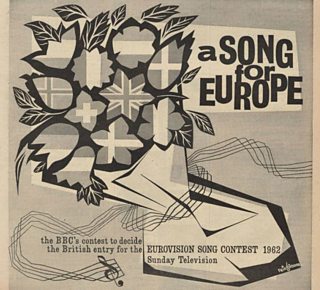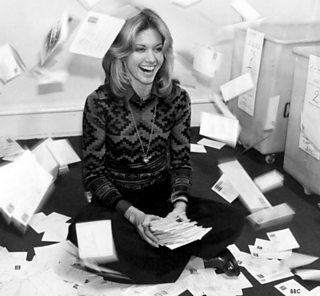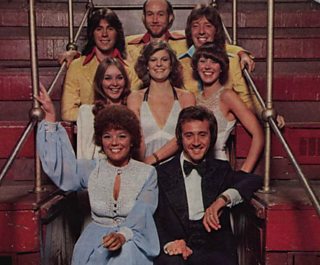Making your mind up
Michael Osborn

A Song for Europe made the Radio Times front cover in 1962
Tonight the public will from a multi-artist, multi-song line-up for the first time in years. We cast our eyes back on how the �������� has gone about this tricky task since the late 1950s.
The UK – and �������� – made their Eurovision debut in 1957, but it took another two years for a big televised to create a dent in the listings.
This spectacular took place over three shows, with well-known singers including Alma Cogan and Rosemary Squires in the running for the golden ticket.
The contest became an annual fixture and was considered such a significant event that it made the Radio Times cover in 1962, while a big feature in the magazine reminded us of how the “fate of the songs are in the hands of the voting panels” around the country.
But in 1964 the ��������’s approach shifted, and the show had just one act – - whose portrait adorned the RT’s cover. The choice rested on which one of his songs was the best.
The following year, viewers were asked to send in a postcard to choose their favourite song out of the six performed by Kathy Kirby. This was long before the advent of televoting and texting to determine more instant popular verdicts.

Answers on a postcard please... Olivia Newton John in 1974
At the �������� this was an era of big stars and popular shows, and the two were brought together to choose a whole run of Eurovision entries. It started in 1967 when – the UK’s first contest winner – showcased her songs on The Rolf Harris Show.
In 1968 pre-ordained act Cliff Richard guested on Cilla Black’s popular programme, while the following year Lulu used her own show as a platform to pick a suitable Song For Europe. Cliff's show was then the vehicle for Mary Hopkin, Clodagh Rodgers and The New Seekers.
In 1973, Cliff had another crack at Eurovision glory, and Cilla did the honours again with a of her popular programme.
The era of one star, several songs finally came to an end in 1976, when the �������� reverted to several acts vying for the big prize. Holding the televised contest in the Royal Albert Hall gave it prestige – and this Song For Europe produced Eurovision winners
In 1977, Terry Wogan – always remembered for his Eurovision commentaries – started a long association with the ��������’s bid to find a UK entrant, which continued through the 1980s at the ��������’s own and Television Centre in west London.
Of course Sir Terry became a big star on �������� television during these years, and A Song For Europe became linked with his show. The final was regularly held during his usual Friday evening slot, while hopefuls performed as part of his thrice-weekly chat show.
In the early 1990s the �������� again tried its hand at selecting its own singer and letting the public pick from a choice of songs. Performers including Michael Ball and Sonia used the Wogan show as their platform.
By the mid-1990s the Wogan show was no longer a TV fixture, and A Song For Europe was given a modern revamp with producer Jonathan King at the helm. It was rebranded as with a home in the Top of the Pops stable.

Some of the 1976 hopefuls. You might notice Cheryl Baker and Tony Christie
But A Song For Europe made a brief comeback, but was killed off as a brand for good after the selection show sent Jemini to Latvia in 2003, who infamously scored 'nul points'.
The �������� tried various formats to pick an ever elusive Eurovision winner from that moment on, including Andrew Lloyd Webber’s in 2009 where he provided the song, while the public selected their favourite act to sing it.
This might be the current end of Genome’s reach, but from 2011-15, the �������� trod the path of internal selection, with executives coming up with an act and a song, recruiting the likes of veterans Bonnie Tyler and Englebert Humperdinck.
Last year’s pre-selected act Electro Velvet provoked such an outcry that the �������� decided to reinstate the original format – asking the public to choose between six acts and their songs. But this time, the shortlist has been determined with the help of music executives and Eurovision fans.
The final will come from London's Forum and screened on �������� Four for the first time (at 7.30pm). Perhaps it marks an intelligent shift away from the shows of yesteryear.
What are your favourite memories – good and bad - from A Song For Europe over the years? What do think is the best way for the �������� to find Eurovision entries? Let us know in the space below
